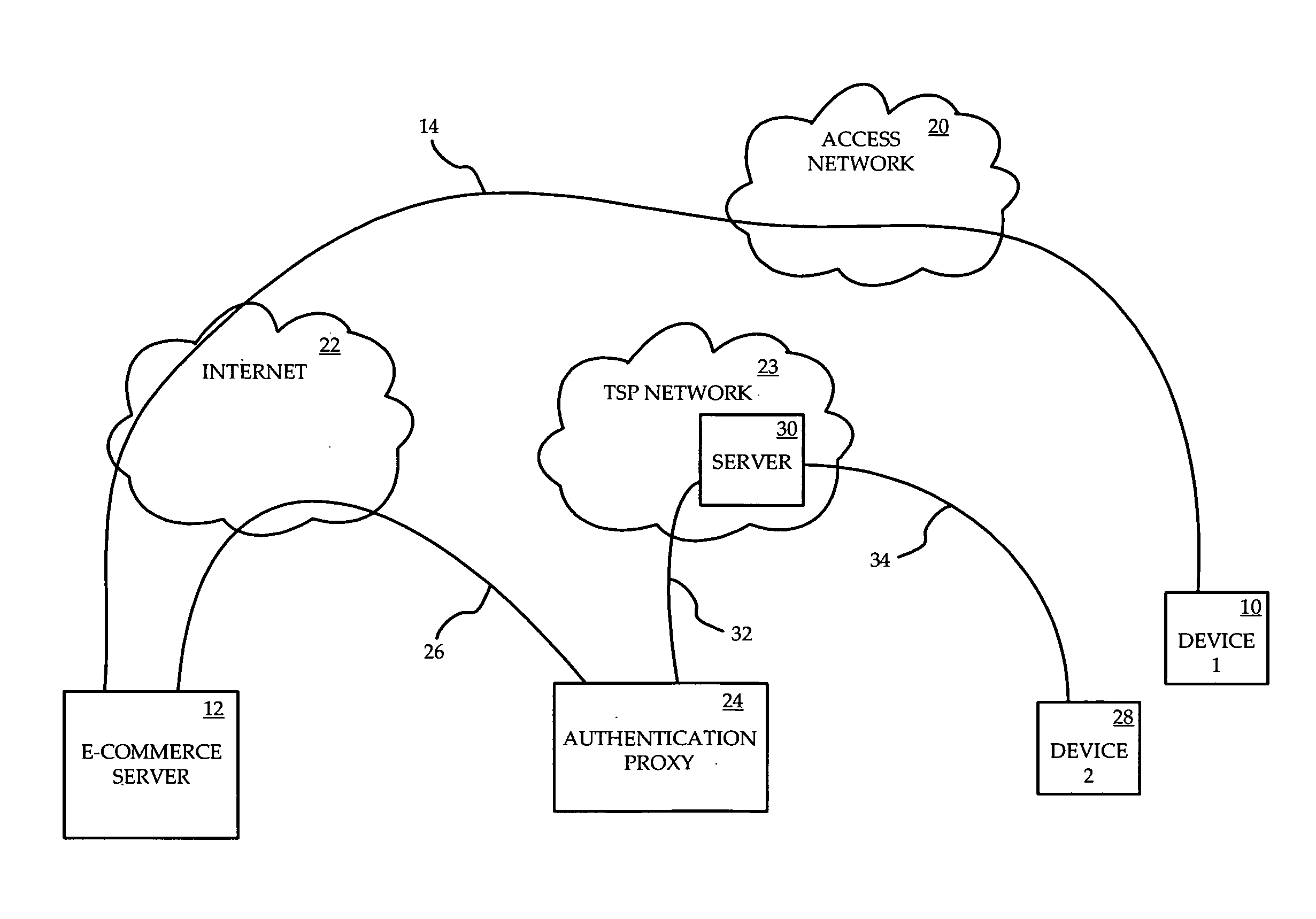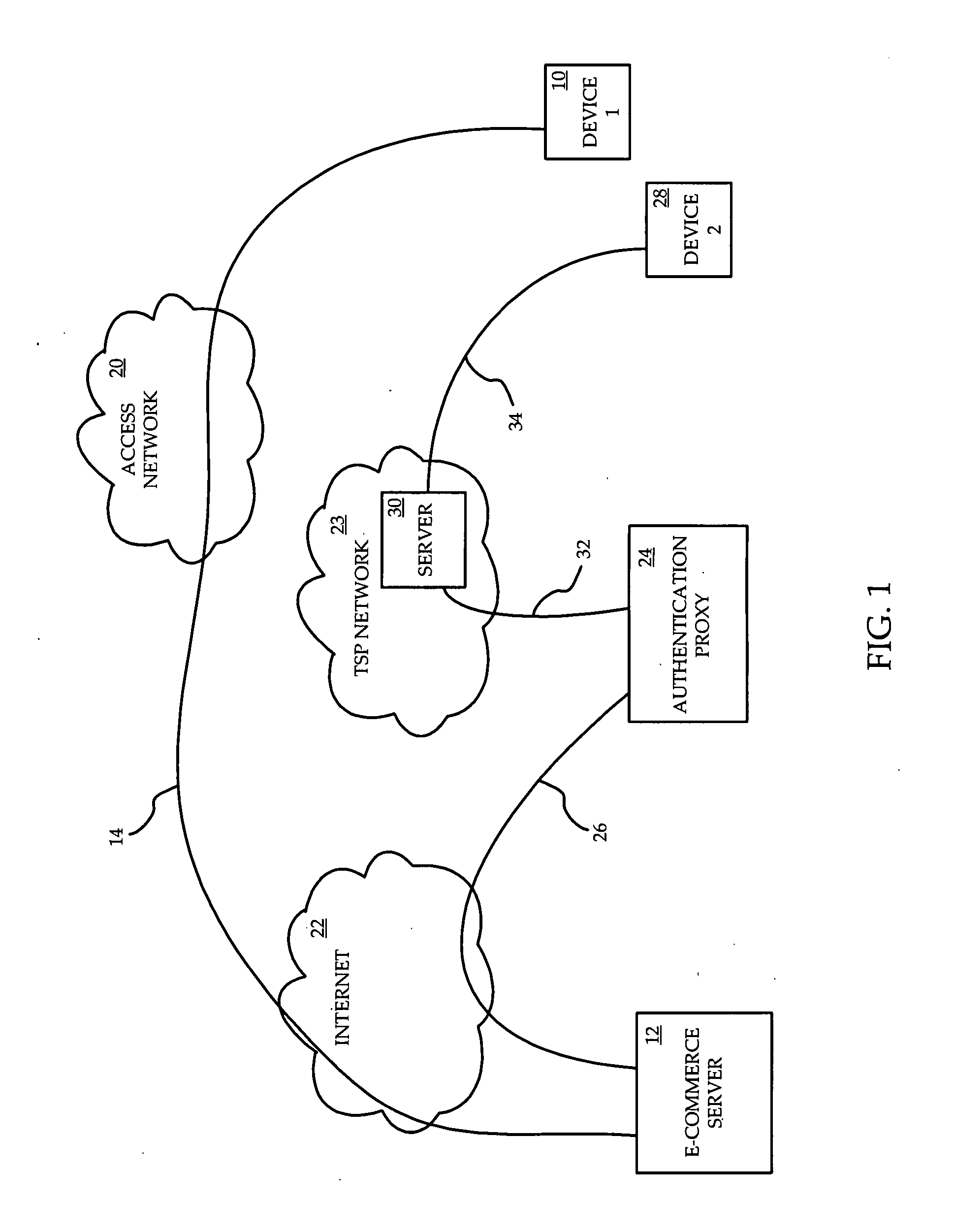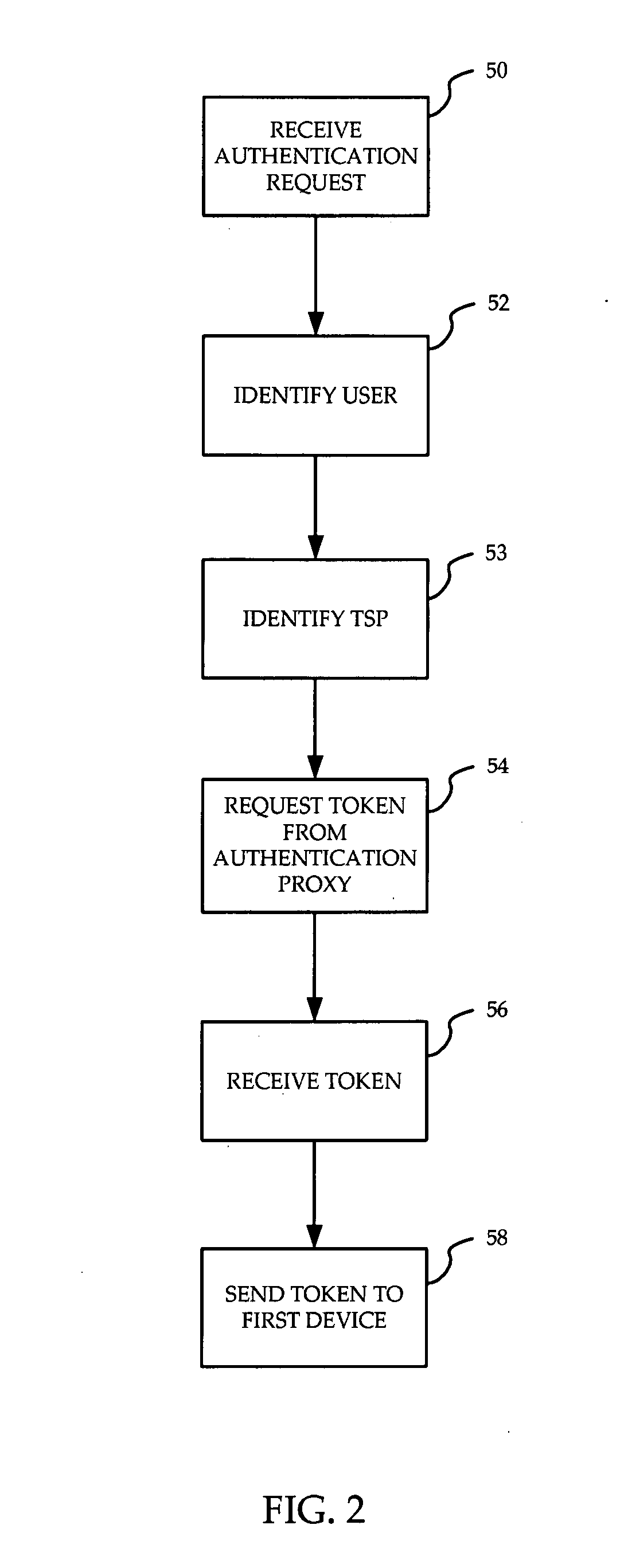Identity verification for secure e-commerce transactions
a technology for e-commerce and identity verification, applied in the field of identity verification for secure e-commerce transactions, can solve the problems of erode the public's confidence in e-commerce, easy tricking of people into entering sensitive information, etc., and achieve the effect of extending the range of services offered and facilitating the verification of the identity of an e-commerce provider
- Summary
- Abstract
- Description
- Claims
- Application Information
AI Technical Summary
Benefits of technology
Problems solved by technology
Method used
Image
Examples
Embodiment Construction
[0017]Referring to FIG. 1, a network in which identity verification during e-commerce transactions is provided according to one embodiment of the invention. A first device 10 communicates with an e-commerce server 12 over a first connection 14. The first device 10 is one through which an end-user can engage in e-commerce transactions using a first application, such as a web browser on a personal computer. The first connection 14 passes through an access network 20 operated by an Internet Service Access Provider, possibly through a home network and residential gateway (not shown) if the first device 10 requires these for accessing the access network 20, and through the Internet 22 to the e-commerce server 12.
[0018]An authentication proxy 24 communicates with the e-commerce server along a first trusted path 26, which is preferably encrypted. The first trusted path 26 is established by an authentication service which ensures that the e-commerce server 12 and the authentication proxy 24...
PUM
 Login to View More
Login to View More Abstract
Description
Claims
Application Information
 Login to View More
Login to View More - R&D
- Intellectual Property
- Life Sciences
- Materials
- Tech Scout
- Unparalleled Data Quality
- Higher Quality Content
- 60% Fewer Hallucinations
Browse by: Latest US Patents, China's latest patents, Technical Efficacy Thesaurus, Application Domain, Technology Topic, Popular Technical Reports.
© 2025 PatSnap. All rights reserved.Legal|Privacy policy|Modern Slavery Act Transparency Statement|Sitemap|About US| Contact US: help@patsnap.com



